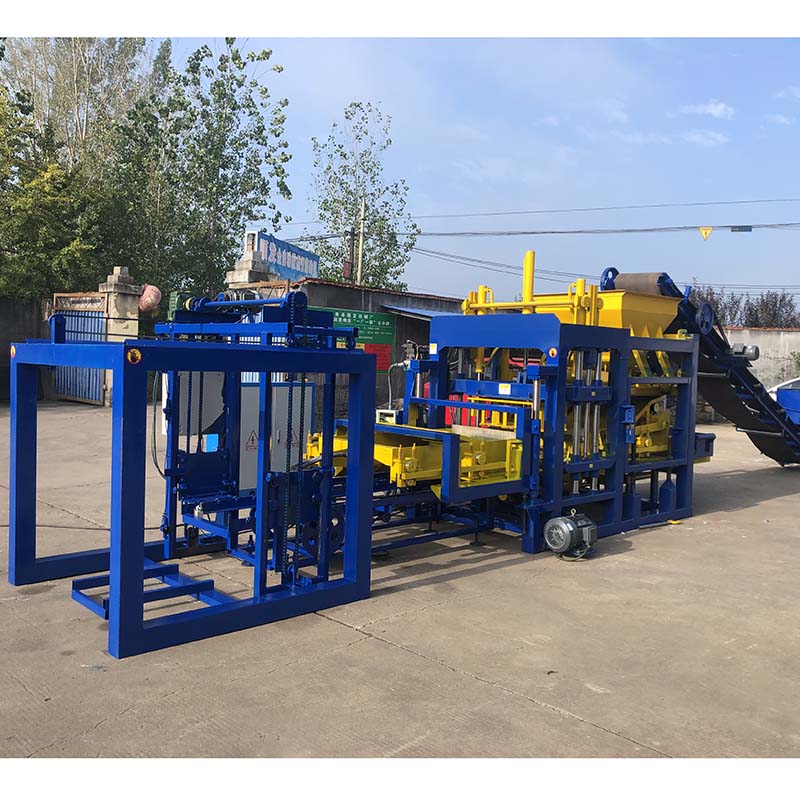
Image source:Aiwei block machine
Introduction
Sustainable urban planning and design have become critical considerations in creating cities that are environmentally friendly, socially inclusive, and economically viable. The construction industry plays a significant role in achieving these goals, and the adoption of innovative technologies such as brick making machines can contribute substantially. This article explores the potential for brick making machines in sustainable urban planning and design, highlighting their benefits in terms of resource efficiency, waste reduction, energy conservation, and community engagement.
Resource Efficiency and Material Conservation
Brick making machines offer a sustainable approach to resource management in urban planning and design. These machines utilize various waste materials, such as construction and demolition waste, fly ash, and slag, to produce high-quality bricks. By diverting waste from landfills and reusing it as a construction material, brick making machines contribute to resource efficiency and material conservation. This reduces the demand for virgin resources like clay and sand, which often require extensive extraction and transportation processes with associated environmental impacts.
Waste Reduction and Landfill Diversion
The construction industry generates a significant amount of waste, contributing to environmental pollution and the depletion of landfill capacity. Brick making machines provide a solution to this problem by enabling the transformation of waste materials into valuable construction products. Instead of disposing of construction and demolition waste in landfills, these waste materials can be crushed, mixed with binders, and processed using brick making machines to create durable and sustainable bricks. This waste reduction and landfill diversion approach aligns with the principles of sustainable urban planning and design, promoting a circular economy and minimizing waste generation.
Energy Conservation and Carbon Footprint Reduction
Traditional brick manufacturing processes often involve energy-intensive procedures, such as firing bricks in kilns. This results in significant carbon emissions and contributes to climate change. In contrast, brick making machines eliminate the need for firing, thereby conserving energy and reducing carbon footprints. These machines typically utilize hydraulic pressure or other alternative methods to form bricks, eliminating the energy-intensive firing process. Moreover, the use of waste materials further reduces the carbon footprint by diverting materials from landfills and avoiding the energy-intensive extraction of raw materials.
Design Flexibility and Aesthetic Appeal
Brick making machines offer design flexibility, allowing architects and urban planners to create unique and aesthetically appealing buildings and structures. These machines can produce bricks of various sizes, shapes, and colors, enabling the customization of designs to suit specific urban contexts. Additionally, bricks produced by these machines can incorporate different additives and binders to enhance their properties, such as insulation, fire resistance, and acoustic performance. This versatility provides architects and urban planners with the opportunity to design sustainable and visually appealing structures that blend harmoniously with the urban landscape.
Local Economic Development and Job Creation
The adoption of brick making machines in sustainable urban planning and design can have positive socio-economic impacts. The use of locally available waste materials reduces the dependence on imported construction materials, contributing to local economic development. It promotes the growth of local industries involved in waste collection, processing, and brick production, creating job opportunities and supporting the local economy. Furthermore, the operation and maintenance of brick making machines require skilled workers, fostering skill development and capacity building within communities.
Community Engagement and Empowerment
Integrating brick making machines into sustainable urban planning and design can also foster community engagement and empowerment. Involving local communities in the collection and processing of waste materials for brick production promotes a sense of ownership and responsibility. Community members can actively participate in waste management initiatives, leading to cleaner and more sustainable neighborhoods. Additionally, the production of bricks using locally available waste materials can instill a sense of pride and connection to the local environment, encouraging community members to take an active role in sustainable urban development.
Challenges and Considerations
While brick making machines hold great potential in sustainable urban planning and design, certain challenges and considerations need to be addressed. Firstly, the quality and performance of the bricks produced by these machines should meet industry standards and regulations. This ensures that the structures built with these bricks are safe, durable, and compliant with building codes. Secondly, the initial investment and operating costs of brick making machines may pose a challenge, especially for smaller-scale projects or resource-constrained communities. However, long-term cost savings and environmental benefits often outweigh the initial investment.
Conclusion
Brick making machines offer substantial potential in sustainable urban planning and design. By promoting resource efficiency, waste reduction, energy conservation, and community engagement, these machines align with the principles of sustainable development. The utilization of waste materials, coupled with design flexibility and local economic development, contributes to the creation of environmentally friendly and socially inclusive cities. As we continue to seek innovative solutions for sustainable urbanization, brick making machines emerge as valuable tools for shaping the cities of the future. Their adoption can pave the way for a more sustainable, resilient, and vibrant urban environment.
